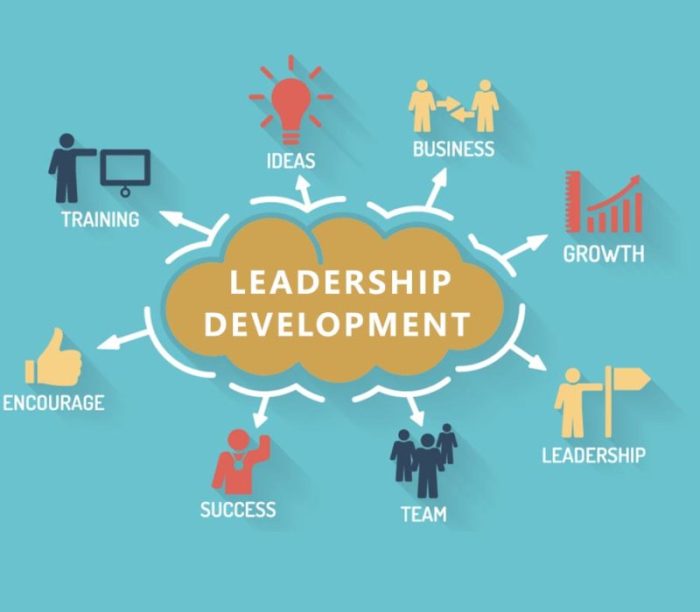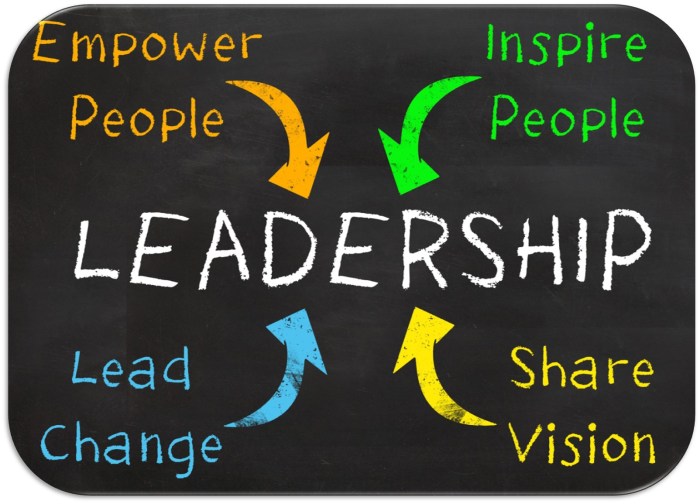Leadership Development sets the stage for this enthralling narrative, offering readers a glimpse into a story that is rich in detail with American high school hip style and brimming with originality from the outset.
Get ready to dive into the world of leadership development, where tomorrow’s leaders are shaped through innovative programs and strategies designed to foster growth and success.
What is Leadership Development?
Leadership development is the process of improving the skills, abilities, and qualities of individuals to become effective leaders within an organization. It involves training, coaching, mentorship, and other initiatives designed to enhance leadership capabilities.
Effective leadership development is crucial for organizations as it helps in building a strong leadership pipeline, driving employee engagement, fostering innovation, and achieving business objectives. Investing in leadership development can lead to higher employee retention, improved performance, and overall organizational success.
Importance of Leadership Development in Organizations
- Developing a strong leadership pipeline ensures continuity and sustainability in leadership roles.
- Enhancing leadership skills can improve employee morale, motivation, and productivity.
- Effective leaders can drive innovation, adapt to change, and lead the organization towards success.
- Leadership development programs can help in identifying and nurturing future leaders within the organization.
Examples of Successful Leadership Development Programs
- Google’s “Googlegeist” program focuses on developing leadership skills through training, workshops, and mentorship.
- General Electric’s Leadership Development Program (LDP) is a renowned program that grooms high-potential employees for leadership roles.
- Apple’s “Leadership 2020” initiative aims to develop leaders who can drive innovation and transformation within the company.
Key Elements of Leadership Development

Effective leadership development programs consist of several essential components that help individuals grow and enhance their leadership skills. These programs often include a combination of training, mentorship, coaching, and practical experiences to develop well-rounded leaders.
Mentorship in Leadership Development
Mentorship plays a crucial role in leadership development by providing individuals with guidance, support, and valuable insights from experienced leaders. Mentors help mentees navigate challenges, set goals, and develop their strengths to become effective leaders in their own right.
Leadership Development Models
There are various leadership development models and frameworks commonly used in the industry to guide the development of leaders. Some popular examples include the Situational Leadership Model, Transformational Leadership Model, and the 360-Degree Feedback Model. Each model offers a unique approach to developing leadership skills and behaviors, tailored to the specific needs of individuals and organizations.
Strategies for Implementing Leadership Development Programs

Implementing successful leadership development programs requires careful planning and execution. Organizations must design initiatives that align with their goals and culture, while also measuring the impact of these programs to ensure effectiveness.
Designing a Successful Leadership Development Program
- Identify Leadership Competencies: Determine the key skills and qualities that leaders need to succeed within your organization.
- Create a Development Plan: Tailor training sessions, workshops, and mentoring opportunities to address the identified competencies.
- Engage Stakeholders: Involve executives, managers, and employees in the program to ensure buy-in and support at all levels.
- Provide Ongoing Support: Offer resources, feedback, and coaching to participants throughout the program to reinforce learning.
Tailoring Leadership Development Initiatives
- Understand Organizational Needs: Customize programs to address specific challenges, goals, and values within your company.
- Adapt to Different Learning Styles: Offer a variety of learning methods, such as workshops, online courses, and on-the-job training, to cater to diverse preferences.
- Promote Inclusivity: Ensure that leadership development opportunities are accessible to employees from all backgrounds and levels within the organization.
Measuring Effectiveness of Leadership Development Programs
- Utilize Key Performance Indicators: Track metrics such as employee retention, promotion rates, and leadership competency assessments to gauge the impact of the program.
- Solicit Feedback: Gather input from program participants, managers, and stakeholders to identify strengths and areas for improvement.
- Conduct Regular Evaluations: Continuously assess the outcomes of the program and make adjustments as needed to enhance its effectiveness.
Challenges and Solutions in Leadership Development
Leadership development programs often face challenges in implementation within organizations. These challenges can range from resistance to change, lack of alignment with organizational goals, to limited resources and support. However, there are solutions that can help address these obstacles and create a culture that fosters growth and development.
Common Challenges in Leadership Development
- Resistance to Change: Employees may resist leadership development initiatives due to fear of the unknown, lack of buy-in, or skepticism about the program’s effectiveness.
- Lack of Resources: Organizations may struggle to allocate sufficient resources, both in terms of time and budget, to support comprehensive leadership development programs.
- Alignment with Organizational Goals: Leadership development programs may fail to align with the strategic goals and priorities of the organization, leading to a lack of relevance and impact.
Solutions to Address Resistance
- Communicate Effectively: Leaders should communicate the purpose and benefits of the leadership development program clearly to employees, addressing concerns and emphasizing the importance of growth and development.
- Engage Stakeholders: Involving key stakeholders in the design and implementation of leadership development initiatives can help build support and ensure alignment with organizational goals.
- Provide Continuous Support: Offering ongoing support, coaching, and feedback to participants can help overcome resistance and reinforce the value of leadership development.
Creating a Culture of Growth
- Lead by Example: Leaders should model behaviors that promote continuous learning and development, inspiring others to embrace growth opportunities.
- Encourage Collaboration: Fostering a culture of collaboration and knowledge sharing can create a supportive environment for leadership development initiatives.
- Reward and Recognize: Recognizing and rewarding individuals who demonstrate leadership qualities can motivate others to engage in development activities and contribute to a culture of growth.